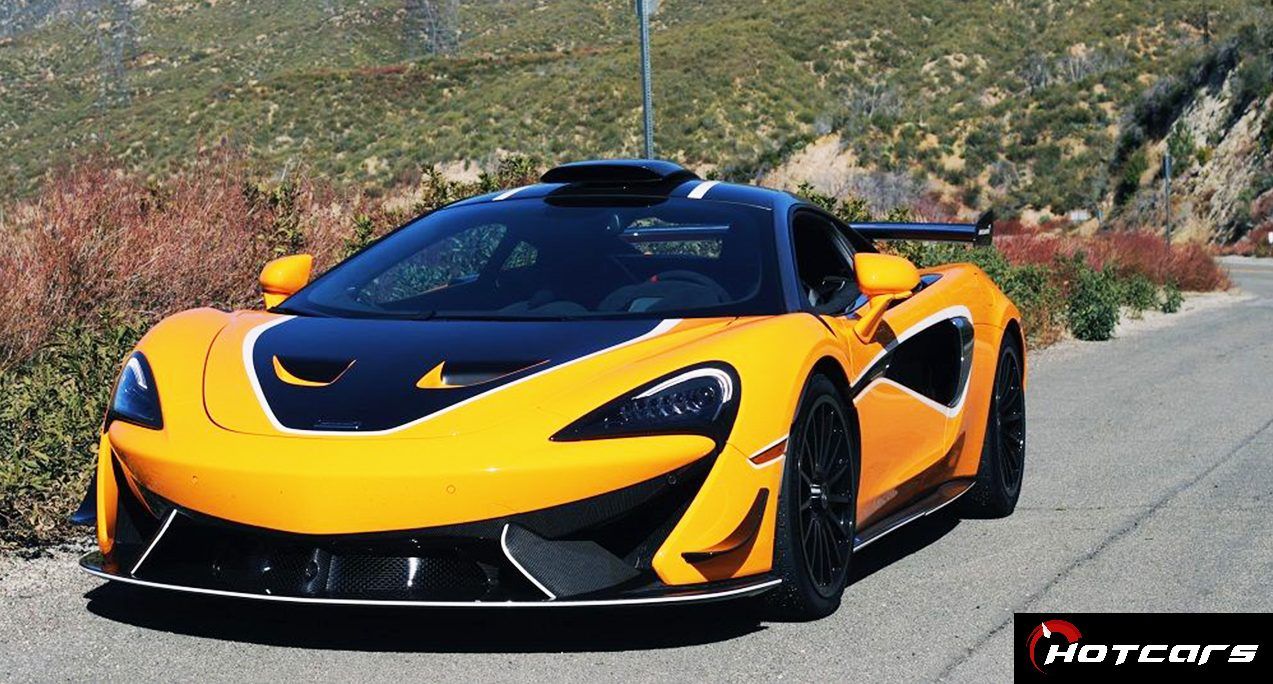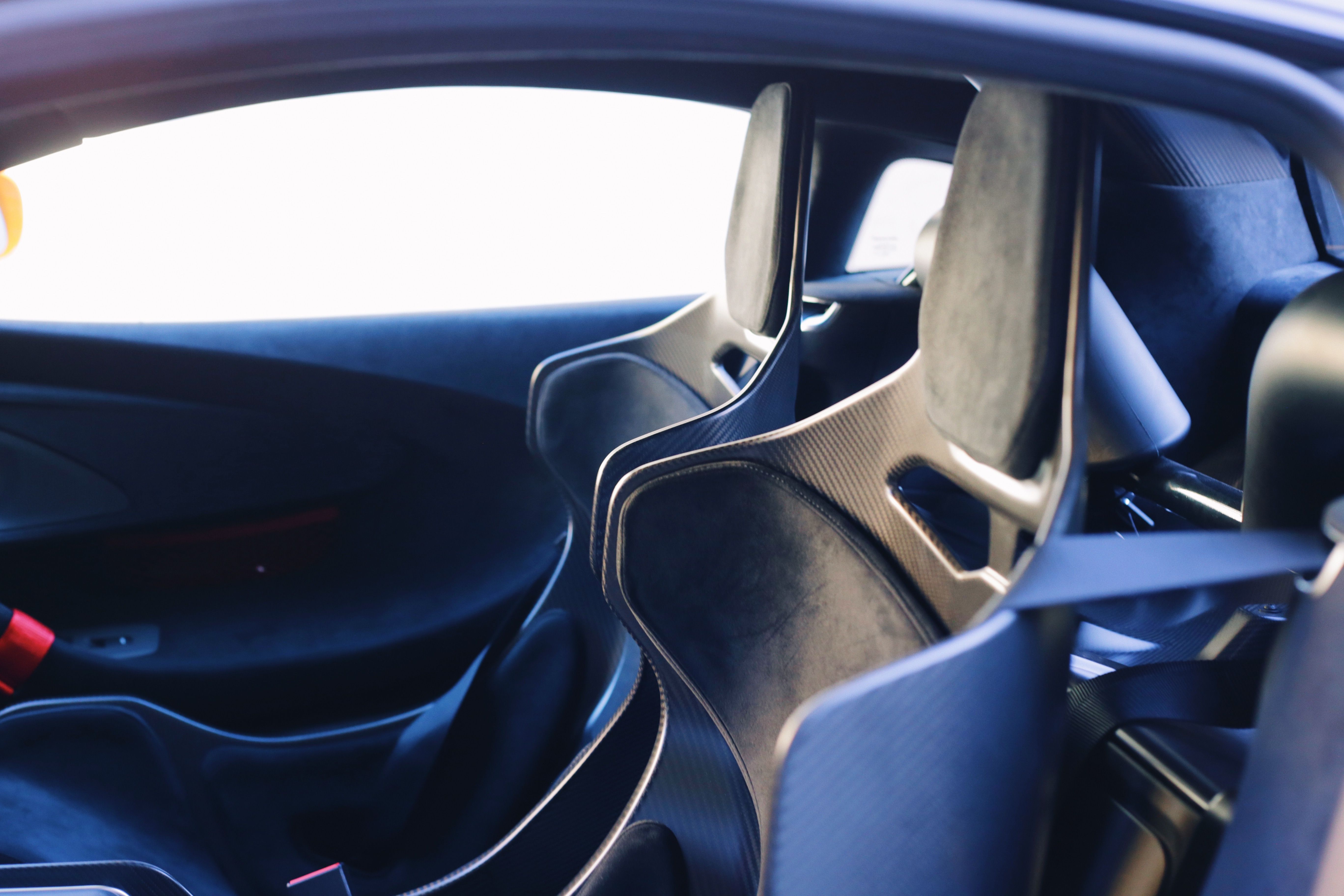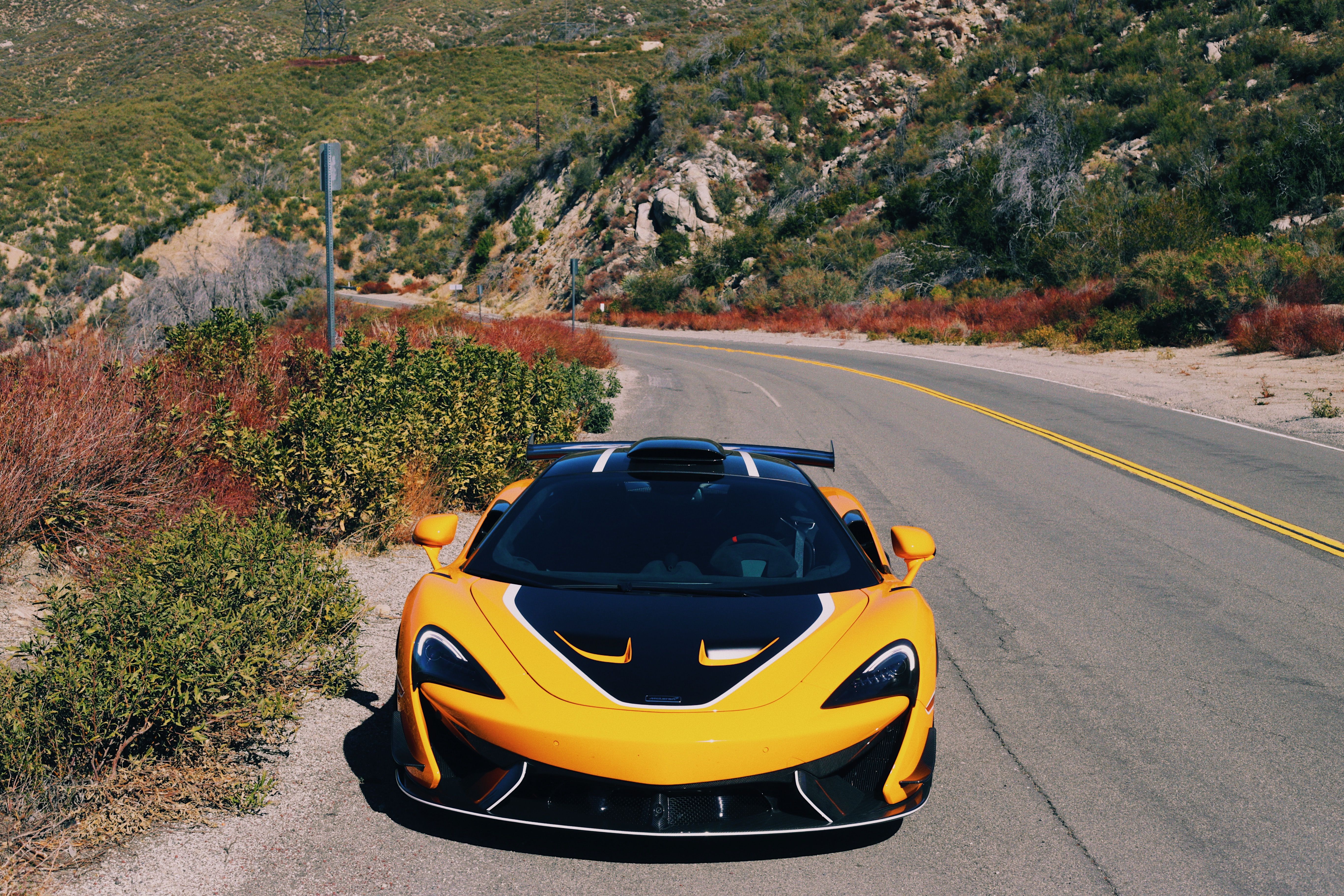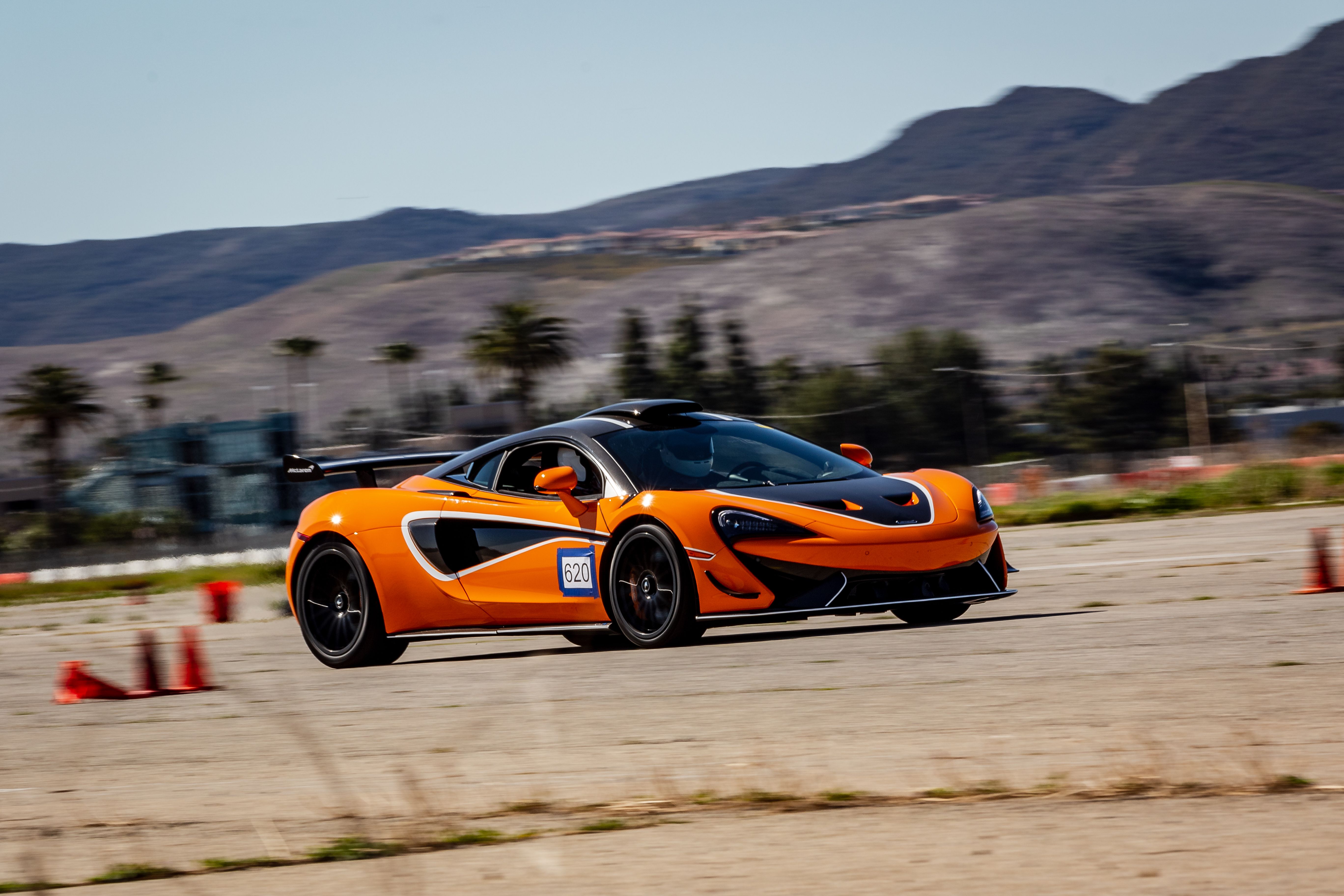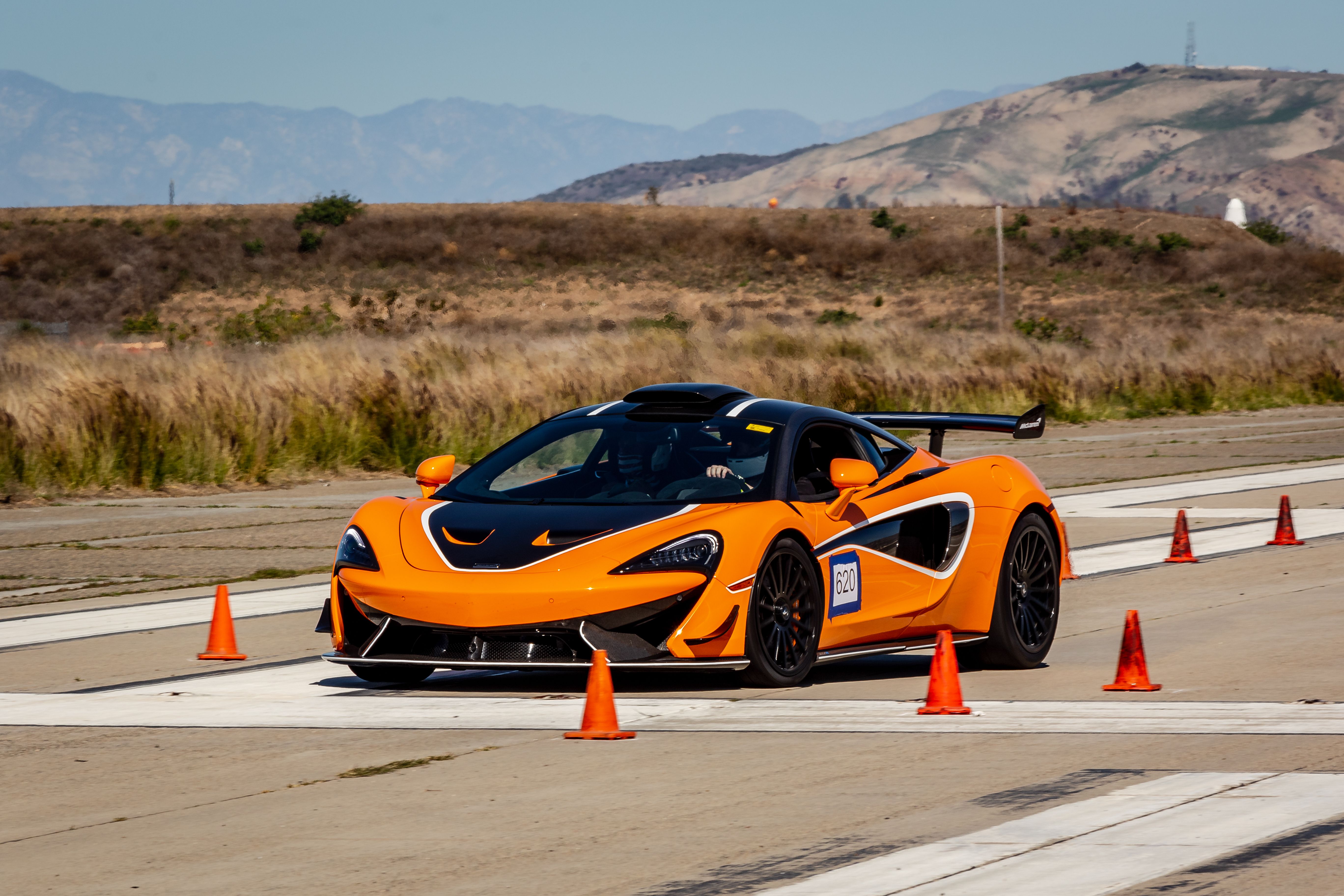“Ohhh k, this is something different” I said out loud, by myself, as I hopped into this idling McLaren 620R a few Fridays ago. I had half a Friday, plus a full weekend to get well-acquainted with this beautiful, orange, road-legal race car. Everything I had read about the 620R as a track-focused monster prior certainly preceded it. No carpets, no insulations, carbon fiber for as far as the eye can see, a fixed racing seat, lots of noise and vibration reverberating throughout the cabin, and did I mention tons of carbon fiber?
This machine was something a bit wilder than a normal road-going McLaren. The question I set out to answer during my time with it, was what’s it like driving an essentially road-legal, near-GT4 car around Los Angeles? To go one further, McLaren gave me the green flag to autocross the following Sunday, so in terms of a car you can drive to an event and back with, how’s it fair for that?
Massive thanks to McLaren USA for lending me this gorgeous, hand-built-in-Surrey, McLaren Orange beast for the weekend. Pricing for the 620R starts at $275,275, but if you’re in the market, you better get to your local dealer sharpish; they’re limited to 350 units.
Wildly, Not Too Wild On The Street
Rolling away from the fleet office to head towards the freeway, all went surprisingly smoothly. The fixed carbon fiber seat was very comfortable, the interior was ideal for a tall-stature like mine, and visibility was surprisingly good. Well, forward and side visibility was, whereas the massive, adjustable wing took up much of the rear-view mirror. But I didn’t find it to take up too much. Plus, it can be chalked up to who cares, it’s a friggin’ race car.
Mild, relaxed acceleration was smooth, as was the dual clutch's shifting. Fun fact, in Drive it sat in place with my foot off the brake and gas pedals; it’d only get to work operating the 7-speed seamless-shift gearbox once I applied pressure to the loud pedal. Its pedal inputs were very nice; a little firm, with good travel and lots of feel.
On the whole, it wasn’t too hardcore. Very comfortable hunks of Alcantara sat on the door sill for comfy open-window cruising, and the sound system was quite good. Albeit the latter required a much higher volume level than usual due to the complete lack of insulation and carpeting.
Steering was easy and McLaren-like; great feel and precision thanks to being hydraulic, as well as not much weight being present on the front end. Except it definitely required more attention than most steering racks; my tester’s 60-treadwear Pirelli P-Zero Trofeo R tires, spurred on by its performance alignment, followed every miniscule crease in the road. These tires are barely street legal. They picked up and threw around every microscopic piece of debris that stuck to their sticky compound.
My tester was equipped with a lift system and McLaren’s standard adaptive damping as well, so Normal mode ironed out crappy LA surface streets just fine, and the lift ensured I wouldn’t chip/scratch/gouge the massive carbon lip jetting out from the front bumper.
Hopping onto the 110 freeway north was more of the same, just more road noise. The thing about cars with real aero is they’re very pleasant to cruise in on the highway with the windows down, and the 620R was no exception. Its aero package disallowed any wind buffeting, even while cruising around 80 MPH. Unlike the 620R’s slightly-more hardcore sibling, the 570S GT4, I didn’t have to undo an FIA-approved window net to stick my arm out the window and feel the nice breeze.
I rolled the window up and turned on the air conditioning to hear 1st Wave on Sirius XM radio a tad more clearly. I recall reading that the 620R doesn’t automatically come with air conditioning in the name of saving weight. The infotainment screen stated that A/C was an option, however the vents revealed different. Looks, or rather, it felt like, mine didn’t have it. That’s ok though; like the massive wing, this was chalked up to who cares, it’s a friggin’ race car, and the driver’s window went back down.
The 620R proved that it was indeed very capable as a car to pop back and forth to the track with. It rode very comfortably over LA’s horrendous street and highway tarmac, and was a comfortable place to be for having a fixed-back racing seat and tons of noise and vibration. Of the engine and road variety. Again, race car.
Its power was also adequate. What am I saying? Even when barely requested via the right pedal, power was way more than adequate. 611 horsepower in a car that weighs less than a Hyundai Veloster N, 3,067 pounds to be exact, is nothing short of jaw-dropping, and the most relaxed passing on the freeway demonstrated this. I couldn’t wait to get up to twisty-road driving heaven: Angeles National Forest.
It Was Incredibly Hard To Keep Everything Legal on the Road
Normally, if you get stuck behind someone driving 5 miles an hour under the speed limit while rolling up Angeles Forest Highway, you’re often stuck behind them until you reach one of the road’s occasional passing lanes. Thankfully, the 620R didn’t get this treatment.
Cruising gently up the road, going slightly over the speed limit and hovering around 2,500-3,000 RPMs, but never braking for any of its many fun turns, I came up on other motorists quite fast. They saw its small, wide, aggressive stature and bright McLaren Orange paint and promptly moved out of the way. Being the polite Midwesterner I am, I always stuck my hand out the window and gave them a wave as I downshifted a gear or two and shot past.
Then, once the road was well-clear… my god was the 620R brilliant.
Upping the pace and getting the 60-treadwear Pirellis more up to temperature made everything better. I ripped between certain corners on Angeles Forest Highway noticeably faster than ever before, including during my experience in the 2020 Lamborghini Huracan EVO RWD. No matter the speed, it always seemed like everything worked so well together -the sticky tires, complex system of aero, brilliant suspension, brilliant chassis, etc. It didn’t matter what the camber of the road was doing, or how technical and tight the corners got.
There was endless grip and brutal acceleration. The way every half-millimeter of steering input translated to half a millimeter of movement in the front-end felt so good. Cornering speeds were nothing short of mind-boggling, and body roll was especially non-existent with the knobs turned to Sport or Race (McLaren’s system is you press the “Active” button for these modes to toggle, which then promptly paralyzes you with goosebumps).
The 7-speed dual-clutch gearbox was the cherry on top. It shifted with such speed and precision. Sure, getting the revs up high was fun, but it was equally fun operating the 620R’s massive carbon fiber shift paddles as much as possible. Shifting in either the mid-range or towards the redline, it was always a ton of fun, and each shift higher up spurred on even quicker acceleration, thanks to McLaren’s Inertia Push technology. It truly was the best mate for the 620R’s angry engine.
The 620R’s twin-turbo, 3.8-liter M838TE V8 was joyously multifaceted. It had the aggressive V8 thing going for it, but also had a flat-plane crank and revved incredibly fast. Its characteristics were more akin to a naturally-aspirated V12 than a common V8, like a GM LS engine.
And then, its twin-turbos compounded its brilliance. Boost began around 2,000 RPMs and gave it a hell of a mid-range. They also made all the best turbo noises. What’s especially cool about the 620R is it’s a street car with a roof scoop. This gigantic, carbon fiber air intake turned up the volume and reverberated the turbos’ noises, making them quite audible in my right ear. Like some kind of mechanical conch shell.
Half the fun of climbing revs behind the wheel of the 620R was how cool all the induction and turbo noises sounded.
On the opposite end of brutal acceleration, I learned rather quickly that the brakes needed some warming up; a mild “oh shit!” moment made this immediately apparent. Though, fair play, this moment meant the carbon ceramic brakes were up to temp for the following succession of corners. All was fine; they had excellent feel and modulation, and were incredibly strong. Slowing down from some serious speeds was a cinch for them, and pedal feel/travel stayed excellent all day; no grabbiness whatsoever when they were well up to temp.
Thanks to the 620R’s 611 horsepower, rear-wheel drive, and just-over-3,000-pound curb weight, 60 MPH from a standstill takes 2.8 seconds. It’ll more than double that in a mere 8.1 seconds. The thing is an absolute beast, making even the laziest of launches absolutely jaw-dropping.
Throughout the entire experience in Angeles National Forest, I couldn’t resist giggling with excitement and amazement. The cornering speeds I felt, how easily the chassis handled everything, how much of the road was transmitted to the seat of my pants through its carbon monocoque via it’s hard-mounted carbon racing seat, it was a wonderful experience. Never had I ever uttered out loud, by myself, in a wide-eyed and serious tone, “this thing is a friggin’ spaceship” so many times.
My wide-eye expression took a long time to wear off after heading back down the mountain, and then onto the freeway back home. And the best event on the weekend’s schedule hadn’t even happened yet: carving between the cones at an autocross event.
Beyond Brilliant At Cone Dodging
“Do you have plans this weekend? We’re doing AX in Irving” read the text I received from my buddy Seth, the Monday before I picked up the 620R.
I explained to him that I had the 620R, needed to spend as much time as I could with it, and had to get the OK from McLaren PR if I were to bring it along. Usually, track driving is forbidden unless it’s the manufacturer’s event. But autocross is different.
“My thoughts exactly!” he replied.
Sure enough McLaren loved the idea, and I was off to the races! Or rather, off to the parking lot full of orange cones!
I was a little rusty; it had been a minute since I’d carved between the cones in one of my own cars. The cars I cut my teeth in autocross with were small, fun hatchbacks -I hadn’t ever driven something so fast and purpose-built for speed like this before.
The event was hosted by Porsche Owners Club, and ended up being a grand time. Staff were awesome, the way they ran the event was top notch, and the course for the day was very fast-car-friendly. Seth rode shotgun during the first session to lend a hand and instruct, though probably just wanted to see what the McLaren was all about.
Totally not shocking: the McLaren 620R was incredibly fun between the cones.
Its brutal acceleration, grip, and brakes made it one of the best platforms ever for this kind of vehicular hijinks. Again, its intention is a track car that you can drive to and from events. In addition to actual racetracks, autocross courses certainly apply!
It’s grip and aero enabled some pupil-dilating speeds through technical slaloms, and point-and-shoot torque made corner-exit out of long sweepers a thunderous event. The immensely direct steering feel, combined with the light and twitchy front end, gave slicing through the course a level of surgical precision that was more like a go-kart or formula car.
Potentially contributing to its twitchy front-end, and rather surprising, was the fact that it wore 225/35/19-front and 285/35/20-rear tires -that’s not as wide as I would’ve suspected! My guess is McLaren was very conscious of the fact that, indeed, it’s very light, and also has a ton of complex aero. According to McLaren, the aero package makes as much as 408 pounds of downforce -pretty wild for a street car. Combine that with its complex web of double-wishbone independent suspension and advanced traction control, and, well, it just doesn’t need anything wider. Still, I’m amazed that a Honda Civic Si has wider tires on the front.
The carbon bucket seats were well suited for the technical, fast corners, both between the cones and up in the mountains a few days prior. They had excellent retention. I even had enough headroom for my Arai helmet; again, McLaren does tall-guy friendliness quite well. Ingress and egress was different; it took finesse and being comfortable with looking like a doof to get in and out of it somewhat gracefully. But again, who cares? It’s a friggin’ race car!
It also put on a hell of a show. People came up to me throughout the day exclaiming that I was one of the most fun cars to watch. The photographer on duty for the day had a blast photographing everything, too.
The final session ended up being my best, partially due to the warm tarmac and cool ambient temperature, but also thanks to my significantly-improved familiarity with this little orange beast. The first run was a throwaway warm up, the following three were super consistent, all with times ranging between 53.290 seconds and 53.750 seconds. The most consistent I had been all day.
The third run was a real doozy: I shot into the final slalom with a bit too much speed, curious to see if the mighty, grippy 620R would hold it. It didn’t; this caused a fun little tail-out moment that I was luckily able to save thanks to a little “when in doubt, power out.” I attribute this all to the car and the fact that it’s advanced traction and stability control was still on. Regardless, I looked like a superstar muscling it back into line.
It Fulfills Its Purpose 100%
I could’ve found things to complain about in the McLaren 620R. The fact that air conditioning wasn’t bolted on, how loud the cabin was, how many small vibrations and squeaks there were, etc. But anyone who’s in the market for a 620R knows exactly what they’re getting themselves into; it’s intended as a GT4 car for the road.
I’ve read some criticisms that it isn’t enough of a GT4 car. No spherical bushings, no stiff-as-hell spring rates, etc. That’s a slippery slope though, and also impedes its ability to be able to drive to and from the track. It makes a couple of accommodations for better street drivability, like its suspension valving, especially with adaptive dampers, but for the most part it’s intention is to be as hardcore as possible. And I love it so much for this. Plus, as much as 22 MPG; not bad all things considered.
It’s stripped down to the bare essentials, and if you’re ok with not having such everyday amenities as air conditioning, a cup holder, or a glovebox, sound insulation, or carpeting, it’s actually very comfortable to ride around in. Conveniently though, it doesn’t actually need a glovebox; it has very deep door pockets stage-left of the interior door handles.
It’s also gorgeous. I’m a big proponent of cars always look better as race cars and the 620R is no exception. The wing, roof scoop, front end aero, the lot; it all looks so good. Plus, the added race car-looking sidewall on it’s wheels means it’ll probably stand a better chance than most supercars against curb rash.
While some might say it’s too ostentatious, I say it’s functionally beautiful.

